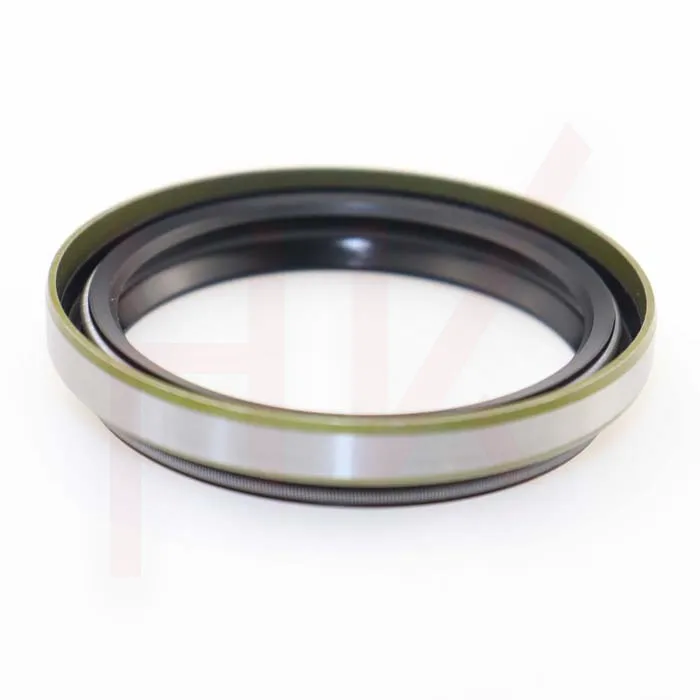Dec . 01, 2024 07:41 Back to list
Different Types of Wiper Seals and Their Applications in Various Industries
Understanding Wiper Seal Types
Wiper seals are critical components in various mechanical systems, particularly in hydraulic and pneumatic applications. They serve a vital role in preventing the leakage of fluids, ensuring efficiency, and maintaining the operational integrity of machinery. Understanding the different types of wiper seals can help in selecting the right one for your specific needs, improving reliability and performance.
What are Wiper Seals?
Wiper seals are designed to keep contaminants out of a system while preventing fluid leakage. They are typically installed at the end of a rod or piston where it exits a cylinder, functioning as the first line of defense against dirt, debris, and moisture. Composed of various elastomers and materials, wiper seals are engineered to handle different operational environments, from high pressure to extreme temperatures.
Common Types of Wiper Seals
1. Single Lip Wiper Seals
Single lip wiper seals are one of the most common types. They feature a single sealing lip that wipes away contaminants as the rod or piston moves in and out of the housing. These seals are easy to install and provide a reliable seal under moderate pressure applications. They are often used in hydraulic cylinders and other machinery where space is a premium.
Double lip wiper seals consist of two sealing lips, offering enhanced protection against contaminants. The additional lip provides an extra layer of defense, making them suitable for more demanding applications where exposure to abrasive materials is a concern. They can also better retain lubrication, which prolongs the life of the other sealing components within the system.
3. U-Cup Wiper Seals
wiper seal types

U-Cup wiper seals are shaped like the letter U and are particularly beneficial in applications where low friction is essential. They excel in oscillating motion systems, such as pneumatic cylinders, due to their design that minimizes drag. U-Cups can effectively exclude dirt and other contaminants, ensuring a longer lifespan for the equipment.
4. V-Ring Seals
V-Ring seals, denoted by their distinctive V shape, are versatile and used in various applications. These seals are capable of operating in both rotary and linear motions. Their design allows for self-adjustment to accommodate wear and tear, enhancing longevity. V-Ring seals also offer excellent protection against dust and particulate matter, making them ideal for environments with significant exposure to contaminants.
5. O-Ring Wiper Seals
While primarily used as static seals, O-rings can also serve as effective wiper seals when designed appropriately. They are particularly advantageous in applications where fluid pressure is a factor, as they can provide reliable sealing under compression. O-ring wipers are simple yet effective, suitable for low to moderate speeds and pressures.
6. Custom Wiper Seals
For unique applications, custom wiper seals can be manufactured to meet specific requirements. These seals can be tailored in terms of dimensions, materials, and lip designs to accommodate unique environmental conditions, such as extreme temperatures or specific chemical exposures. Custom solutions can greatly enhance the performance and lifespan of machinery, especially in specialized industries.
Conclusion
Selecting the right type of wiper seal is essential for the performance and reliability of hydraulic and pneumatic systems. Each type of wiper seal has its unique characteristics and advantages, tailored to meet the needs of specific applications. By understanding the various types of wiper seals available, users can make informed decisions that enhance machinery longevity, efficiency, and overall performance. Whether you're dealing with light-duty applications or demanding conditions, the right wiper seal can make all the difference in maintaining operational integrity.
-
TCN Oil Seal Metal Ring Reinforcement for Heavy Machinery
NewsJul.25,2025
-
Rotary Lip Seal Spring-Loaded Design for High-Speed Applications
NewsJul.25,2025
-
Hydraulic Cylinder Seals Polyurethane Material for High-Impact Jobs
NewsJul.25,2025
-
High Pressure Oil Seal Polyurethane Coating Wear Resistance
NewsJul.25,2025
-
Dust Proof Seal Double Lip Design for Construction Equipment
NewsJul.25,2025
-
Hub Seal Polyurethane Wear Resistance in Agricultural Vehicles
NewsJul.25,2025
-
The Trans-formative Journey of Wheel Hub Oil Seals
NewsJun.06,2025
Products categories
















